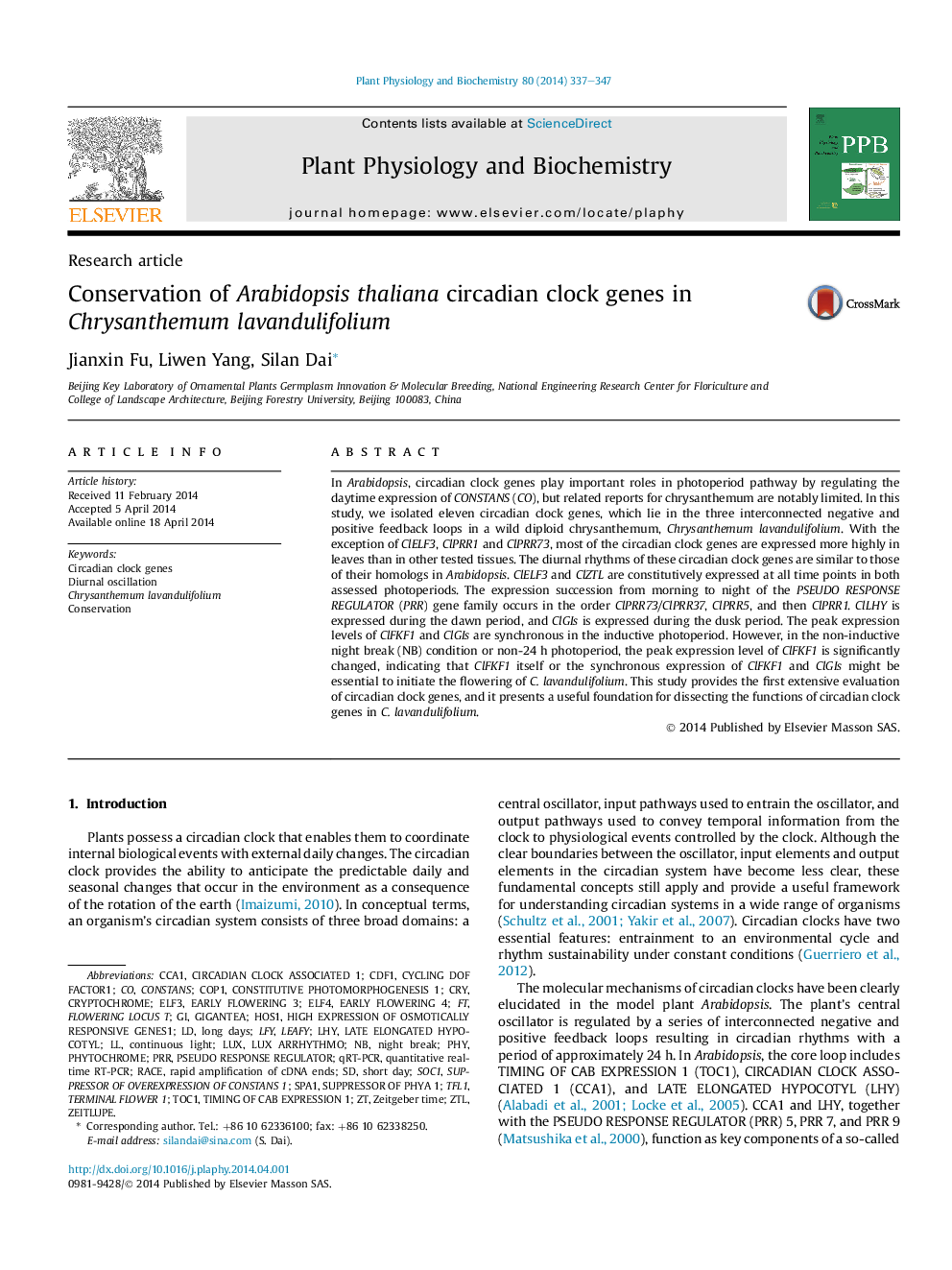| کد مقاله | کد نشریه | سال انتشار | مقاله انگلیسی | نسخه تمام متن |
|---|---|---|---|---|
| 2014845 | 1541941 | 2014 | 11 صفحه PDF | دانلود رایگان |

• Eleven circadian clock genes are isolated from Chrysanthemum lavandulifolium.
• The expression patterns of these clock genes are analyzed.
• The expression peaks of ClFKF1 and ClGIs are synchronous in inductive photoperiod.
• The expression peak of ClFKF1 decreases or disappears in non-inductive condition.
In Arabidopsis, circadian clock genes play important roles in photoperiod pathway by regulating the daytime expression of CONSTANS (CO), but related reports for chrysanthemum are notably limited. In this study, we isolated eleven circadian clock genes, which lie in the three interconnected negative and positive feedback loops in a wild diploid chrysanthemum, Chrysanthemum lavandulifolium. With the exception of ClELF3, ClPRR1 and ClPRR73, most of the circadian clock genes are expressed more highly in leaves than in other tested tissues. The diurnal rhythms of these circadian clock genes are similar to those of their homologs in Arabidopsis. ClELF3 and ClZTL are constitutively expressed at all time points in both assessed photoperiods. The expression succession from morning to night of the PSEUDO RESPONSE REGULATOR (PRR) gene family occurs in the order ClPRR73/ClPRR37, ClPRR5, and then ClPRR1. ClLHY is expressed during the dawn period, and ClGIs is expressed during the dusk period. The peak expression levels of ClFKF1 and ClGIs are synchronous in the inductive photoperiod. However, in the non-inductive night break (NB) condition or non-24 h photoperiod, the peak expression level of ClFKF1 is significantly changed, indicating that ClFKF1 itself or the synchronous expression of ClFKF1 and ClGIs might be essential to initiate the flowering of C. lavandulifolium. This study provides the first extensive evaluation of circadian clock genes, and it presents a useful foundation for dissecting the functions of circadian clock genes in C. lavandulifolium.
Journal: Plant Physiology and Biochemistry - Volume 80, July 2014, Pages 337–347